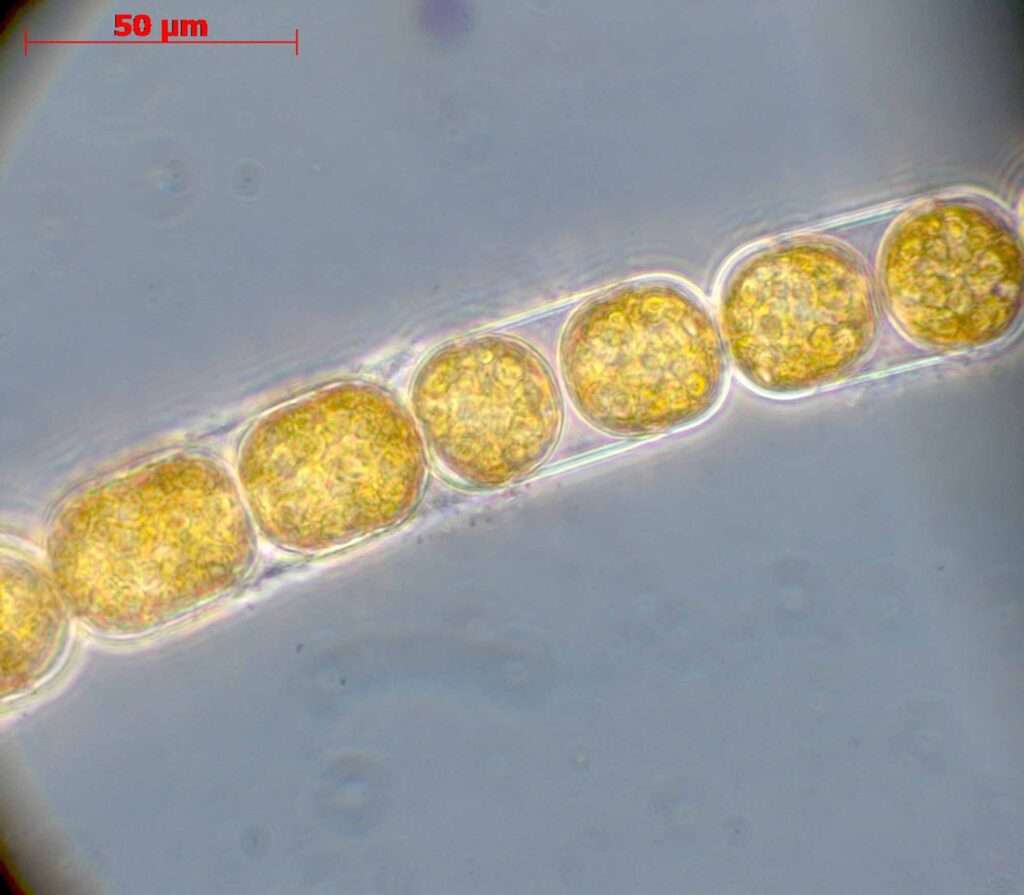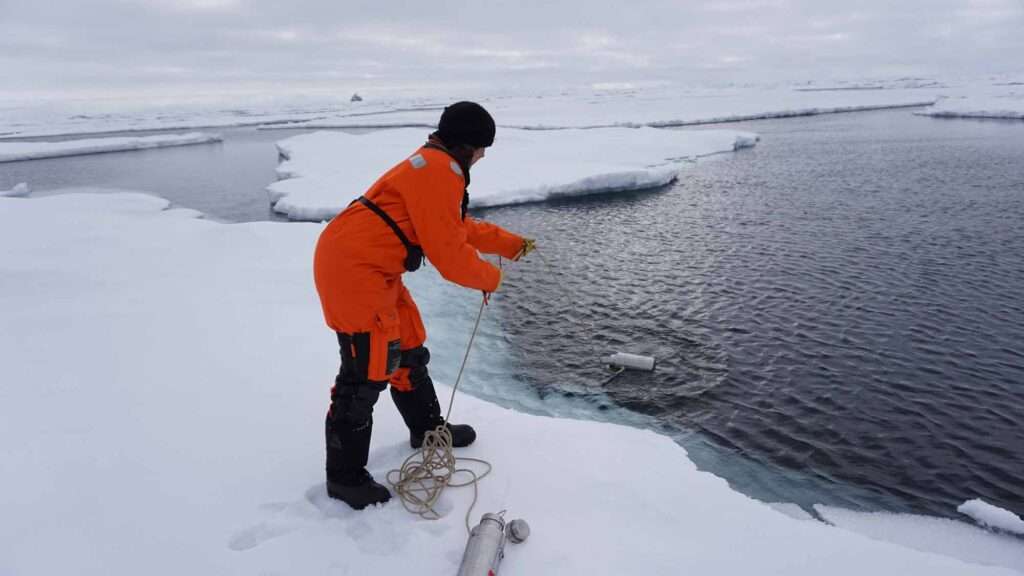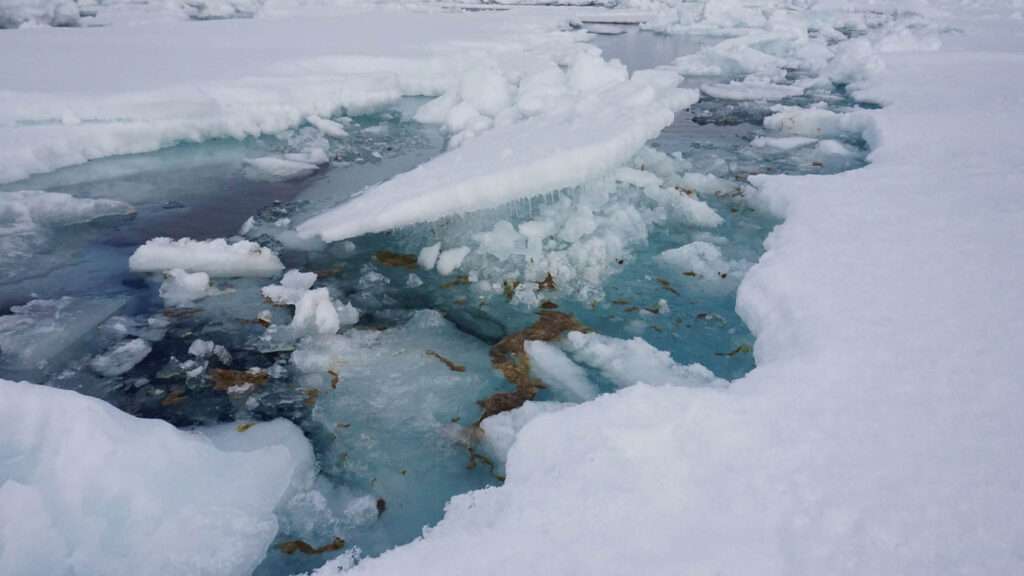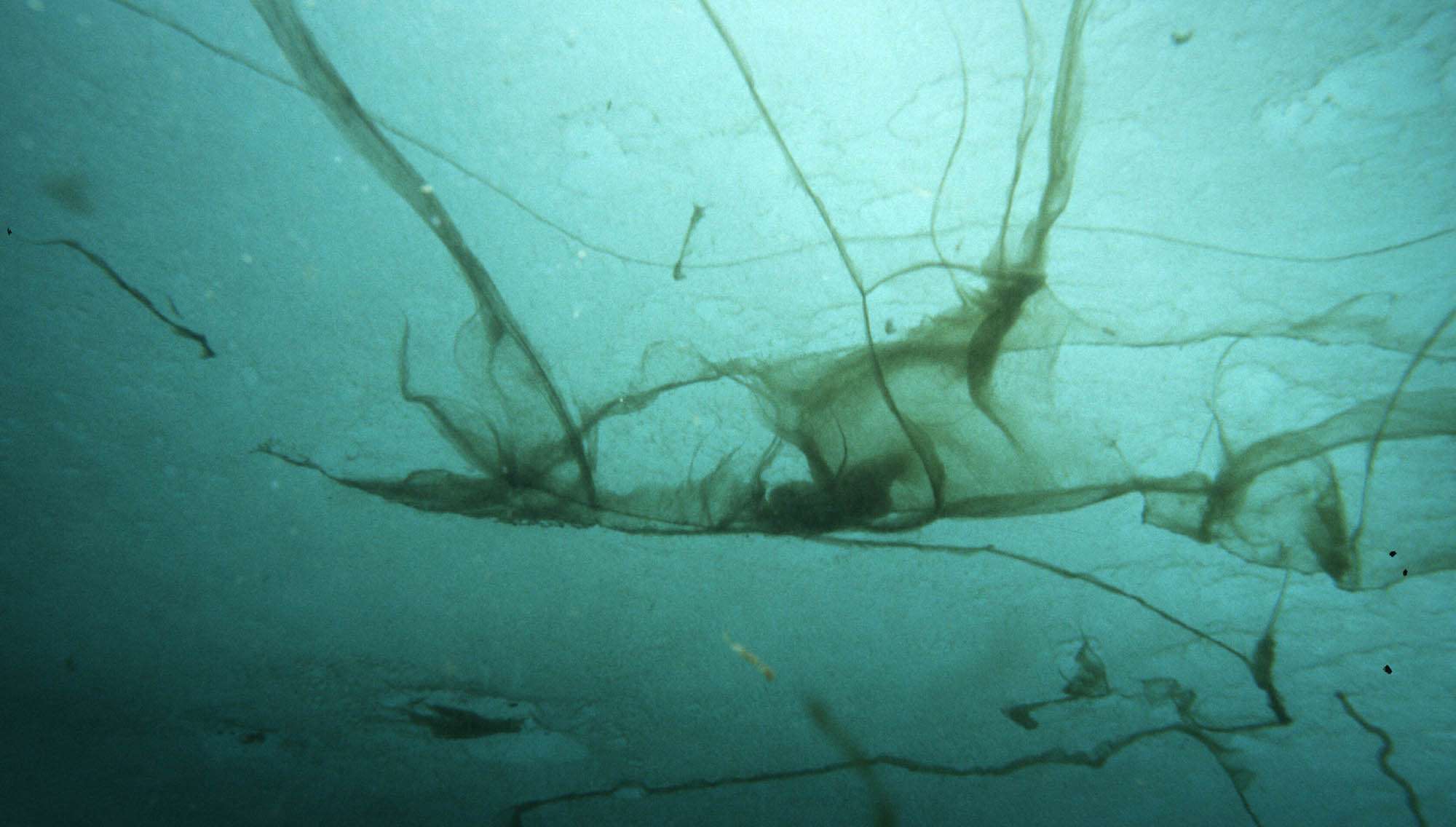Microplastics have been found in algae in ice in the Arctic that experts have described as being “heavily contaminated” and a threat to human food chains.
This is according to a new study conducted by researchers at the Alfred Wegener Institute for Polar and Marine Research in Germany.
The researchers said that samples of the algae, known as Melosira arctica, were found to contain 31,000 microplastic particles per cubic metre on average, which is about 10 times higher than the concentration of microplastics in the surrounding water.
Newsflash obtained a statement from the Alfred Wegener Institute on Friday, 21st April, saying: “The alga Melosira arctica, which grows under Arctic sea ice, contains 10 times as many microplastic particles as the surrounding seawater.

“This concentration at the base of the food web poses a threat to creatures that feed on the algae at the sea surface.
“Clumps of dead algae also transport the plastic with its pollutants particularly quickly into the deep sea – and can thus explain the high microplastic concentrations in the sediment there.”
The experts explained that the algae as a source of food for a number of deep-sea animals, saying: “It is a food lift for bottom-dwelling animals in the deep sea: the alga Melosira arctica grows at a rapid pace under the sea ice during spring and summer months and forms metre-long cell chains there.
“When the cells die and the ice to whose underside they adhere melts, they stick together to form clumps that can sink several thousand metres to the bottom of the deep sea within a single day.
“There they form an important food source for bottom-dwelling animals and bacteria. In addition to food, however, these aggregates also transport a dubious cargo into the Arctic deep sea: microplastics.”
Melanie Bergmann, a biologist and the team leader, said: “We have finally found a plausible explanation for why we always measure the largest amounts of microplastics in the area of the ice edge, even in deep-sea sediment.”
She added: “The speed at which the Alga descends means that it falls almost in a straight line below the edge of the ice.
“Marine snow, on the other hand, is slower and gets pushed sideways by currents so sinks further away.

“With the Melosira taking microplastics directly to the bottom, it helps explain why we measure higher microplastic numbers under the ice edge.”
Bergmann and her research team collected samples of Melosira algae and the surrounding water from ice floes on an expedition with the research vessel Polarstern in the summer of 2021.
Their partners at the Ocean Frontier Institute (OFI), Dalhousie University and the University of Canterbury then analysed the samples in a laboratory, looking for microplastic content.
The expert said they were surprised by the result, with the samples containing on average 31,000 microgrammes of plastic particles per cubic metre, which they said was “about 10 times the concentration of the surrounding water.”
Deonie Allen of the University of Canterbury and Birmingham University, who is part of the research team, said: “The filamentous algae have a slimy, sticky texture, so it potentially collects microplastic from the atmospheric deposition on the sea, the seawater itself, from the surrounding ice and any other source that it passes.
“Once entrapped in the algal slime they travel as if in an elevator to the seafloor, or are eaten by marine animals.”
The statement said: “Since the ice algae are an important food source for many deep-sea dwellers, the microplastic could thus enter the food web there.
“But it is also an important food source at the sea surface and could explain why microplastics were particularly widespread among ice-associated zooplankton organisms, as an earlier study with AWI participation shows.

“In this way, it can also enter the food chain here when the zooplankton is eaten by fish such as polar cod and these are eaten by seabirds and seals and these in turn by polar bears.”
The study said that a number of different kinds of plastic have been found in the Arctic, including “polyethylene, polyester, polypropylene, nylon, acrylic and many more. In addition to various chemicals and dyes, this creates a mix of substances whose impact on the environment and living creatures is difficult to assess.”
Bergmann said: “People in the Arctic are particularly dependent on the marine food web for their protein supply, for example through hunting or fishing. This means that they are also exposed to the microplastics and chemicals contained in it.
“Microplastics have already been detected in human intestines, blood, veins, lungs, placenta and breast milk and can cause inflammatory reactions, but the overall consequences have hardly been researched so far.”
Steve Allen, of OFI Dalhousie University, and a member of the research team, said: “Micro and nano plastics have basically been detected in every place scientists have looked in the human body and within a plethora of other species. It is known to change behaviours, growth, fecundity and mortality rates in organisms and many plastic chemicals are known toxins to humans.”
The statement said: “Moreover, the Arctic ecosystem is already threatened by the profound environmental upheavals caused by the climate crisis. If the organisms are now additionally exposed to microplastics and the chemicals they contain, it can weaken them further.”
Bergmann said: “So, we have a combination of planetary crises that we urgently need to address effectively. Scientific calculations have shown that the most effective way to reduce plastic pollution is to reduce the production of new plastic.”

She added: “This should therefore definitely be prioritised in the global plastics agreement that is currently being negotiated.”
The study was published in the academic journal Environmental Science and Technology under the title ‘High Levels of Microplastics in the Arctic Sea Ice Alga Melosira arctica, a Vector to Ice-Associated and Benthic Food Webs’, on Friday, 21st April.
Bergmann will reportedly be taking part in the next round of negotiations set to begin in Paris at the end of May.
To find out more about the author, editor or agency that supplied this story – please click below.
Story By: Joseph Golder, Sub-Editor: Marija Stojkoska, Agency: Newsflash
The Ananova page is created by and dedicated to professional, independent freelance journalists. It is a place for us to showcase our work. When our news is sold to our media partners, we will include the link here.




